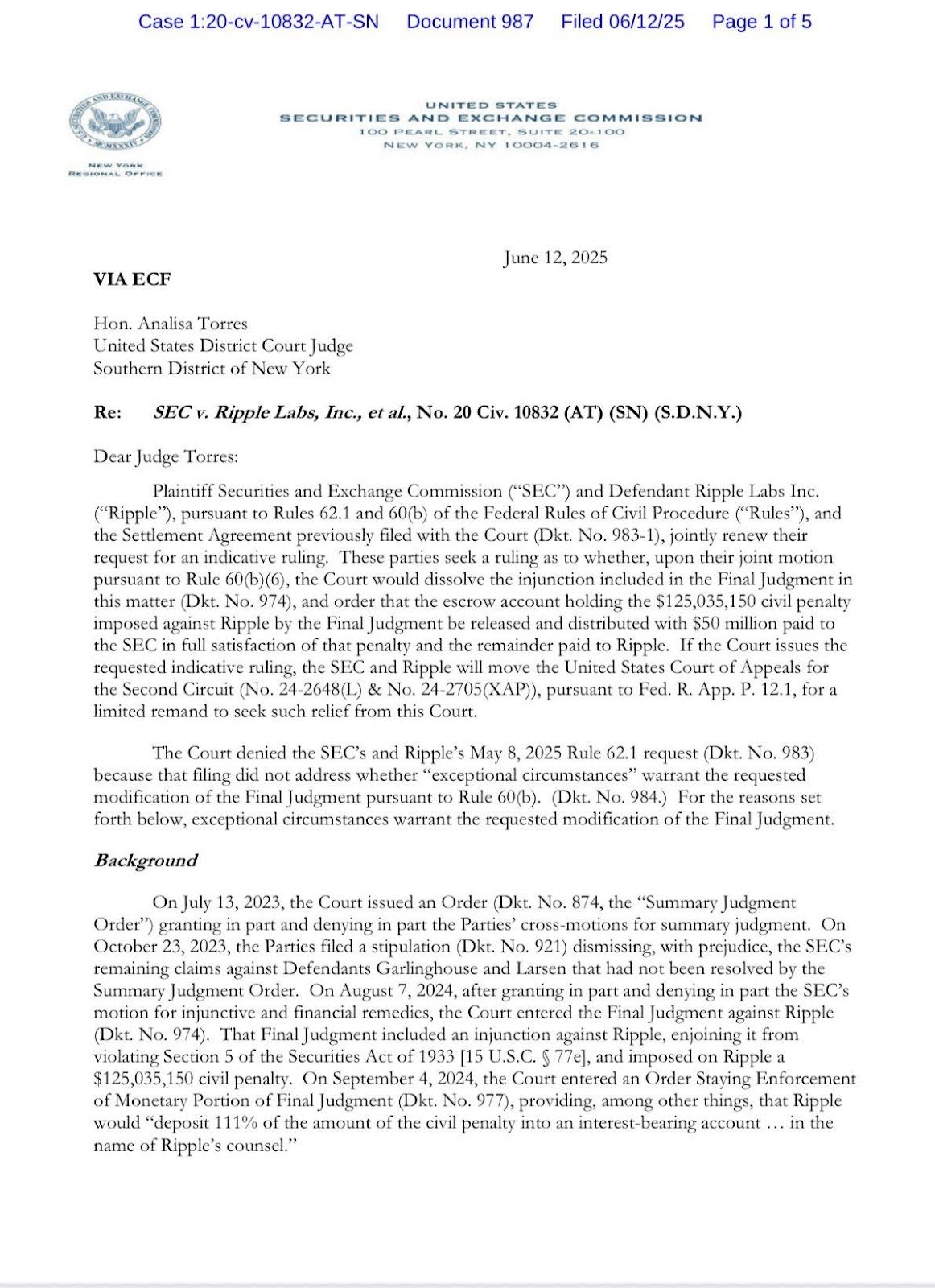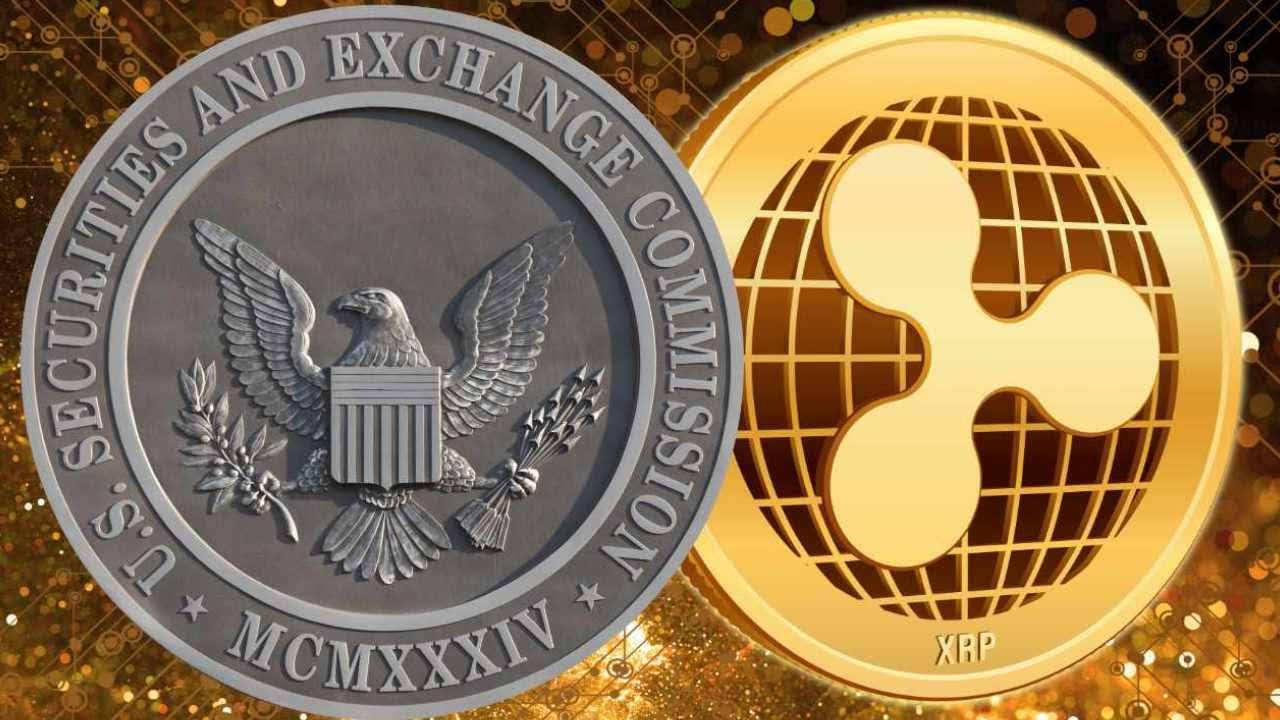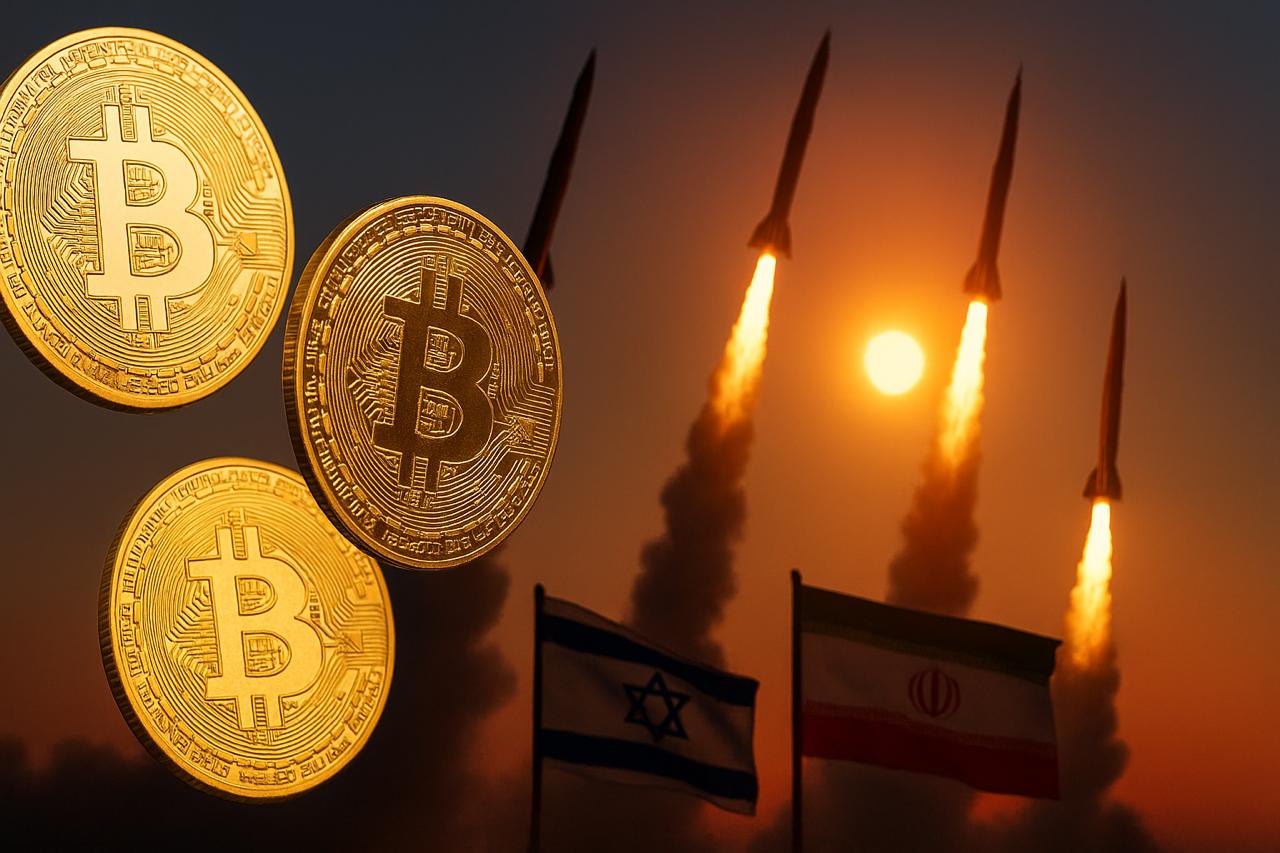Key Takeaways:
Ripple and the U.S. SEC have jointly filed to dissolve a longstanding injunction and unlock $125 million held in escrow. The proposal includes Ripple paying a $50 million civil penalty, while recovering the remaining $75 million. This development signals a potential end to a nearly 4-year legal standoff over the XRP token.Ripple Labs’ fierce legal fight with the U.S. Securities and Exchange Commission (SEC) might be on the verge of ending at last. Both sides have filed a joint motion with the Southern District Court of New York to lift a previous injunction and free the remaining $125 million in escrow — split $50 million for the SEC and $75 million back to Ripple.
Read More: SEC’s 12-Day Countdown: Will Ripple’s Fate Be Sealed or Stretched Into 2026?
The Motion: A Joint Attempt to End the XRP Saga
After almost four years of legal wrangling, Ripple and the SEC are now showing rare alignment. In their latest court filing, both sides requested the dissolution of a prior injunction related to Ripple’s institutional XRP sales. This injunction had frozen $125 million as part of a broader civil penalty and compliance process.

According to the motion, Ripple has agreed to pay $50 million of that amount to the SEC. The rest, $75 million, would revert back to the company, pending approval from U.S. District Judge Analisa Torres.
This joint motion is a sharp pivot from the previous tone of the case, which began in 2020 when the SEC accused Ripple of conducting an unregistered securities offering through its XRP sales. Ripple, for its part, consistently denied the allegations and has maintained that XRP is not a security.
Case Background: A Tug-of-War Over Crypto Classification
The Origins of the Lawsuit
In December 2020, the SEC’s The case alleged that CEO Brad Garlinghouse and co-founder Chris Larsen raised over $1.3 billion through unregistered, ongoing digital asset securities. It became a landmark case in crypto regulation, effectively freezing XRP listings on major U.S. exchanges and casting a shadow over the regulatory status of countless other tokens.
In 2023, the tables in the courtroom turned in Ripple’s favor on word from Judge Torres that XRP sales on public crypto exchanges did not qualify as securities transactions. Yet institutional sales of XRP were found to have violated federal securities laws, and this partial victory came with its own set of sanctions.
The SEC had initially sought an enormous $2 billion in penalties, but later agreed to a fine of $125 million following protracted negotiations and court rulings.
Ripple’s Strategy: Avoid Appeals and Build Regulatory Momentum
The sanction that Ripple agreed to, a $50 million civil penalty, was the latest move in a long game that now pits the blockchain company against the agency in a court fight to determine the status of a multibillion-dollar asset. The company, which is working with the SEC to unfreeze funds and resolve the case, is seeking to avoid additional legal expenses, mounting uncertainty and damage to its brand.
This joint movement also comes after a year of Ripple’s strategic global expansion. Over the last few months, Ripple obtained regulatory approval in Dubai to provide stablecoin and blockchain payment services. The Dubai International Financial Centre (DIFC) also gave the green light to the company’s RLUSD stablecoin, which puts Ripple at a very comfortable position globally regulations-wise.
Returning $75 million of escrowed capital could provide Ripple with fresh liquidity as it scales its institutional products abroad.
SEC’s Softened Stance on Crypto Enforcement?
From Aggression to Accommodation?
The Ripple-SEC joint filing comes amid a broader shift in how the SEC is approaching crypto enforcement. The Commission, under the command of Gary Gensler, had taken a notably aggressive approach, filing legal actions against titans like Coinbase, Binance and Ripple. Recent trends, however, suggest a pivot.
The SEC disbanded numerous open crypto cases in May. Insiders also tell me that current leadership in the Commission might be more inclined to negotiate as they pursue new charges rather than sue.
Commissioner Caroline Crenshaw expressed concern in public statements, warning that the softening stance could put retail investors at greater risk. Still, for many in the crypto industry, these changes represent a breath of regulatory relief.
Judge Torres’ Role and the Path Forward
Earlier this year, Judge Torres rejected an initial procedural attempt by Ripple and the SEC to finalize the settlement via an “indicative ruling.” At the time, she cited jurisdictional complications and the fact that appeals were still pending.
Both parties have since filed to pause those appeals. This joint motion to dissolve the injunction may indicate that the procedural roadblocks are now resolved, opening the way for the case to conclude fully and finally.
What This Means for XRP and the Crypto Industry
Ripple’s partial legal victory and ongoing regulatory clearance abroad could pave the way for a more active re-listing of XRP on U.S. exchanges. XRP is currently trading in the $0.50–$0.55 range, which is down from its all-time highs but way up from its post-lawsuit lows.
Here are some of the possible effects that analysts have anticipated from moving off the case:
Boost XRP’s liquidity and trading volume Encourage institutional adoption of Ripple’s payment solutions Provide clearer precedent for token classification in the U.S.And other projects being looked at by the SEC could view Ripple’s roadmap (legal pushback followed by settlement) as a blueprint for fighting back against the enforcer.
The post Ripple and SEC Push to Unlock $125M in Escrow—But Only One Side Gets Paid appeared first on CryptoNinjas.







.jpg.webp?itok=1zl_MpKg)





 Bengali (Bangladesh) ·
Bengali (Bangladesh) ·  English (United States) ·
English (United States) ·